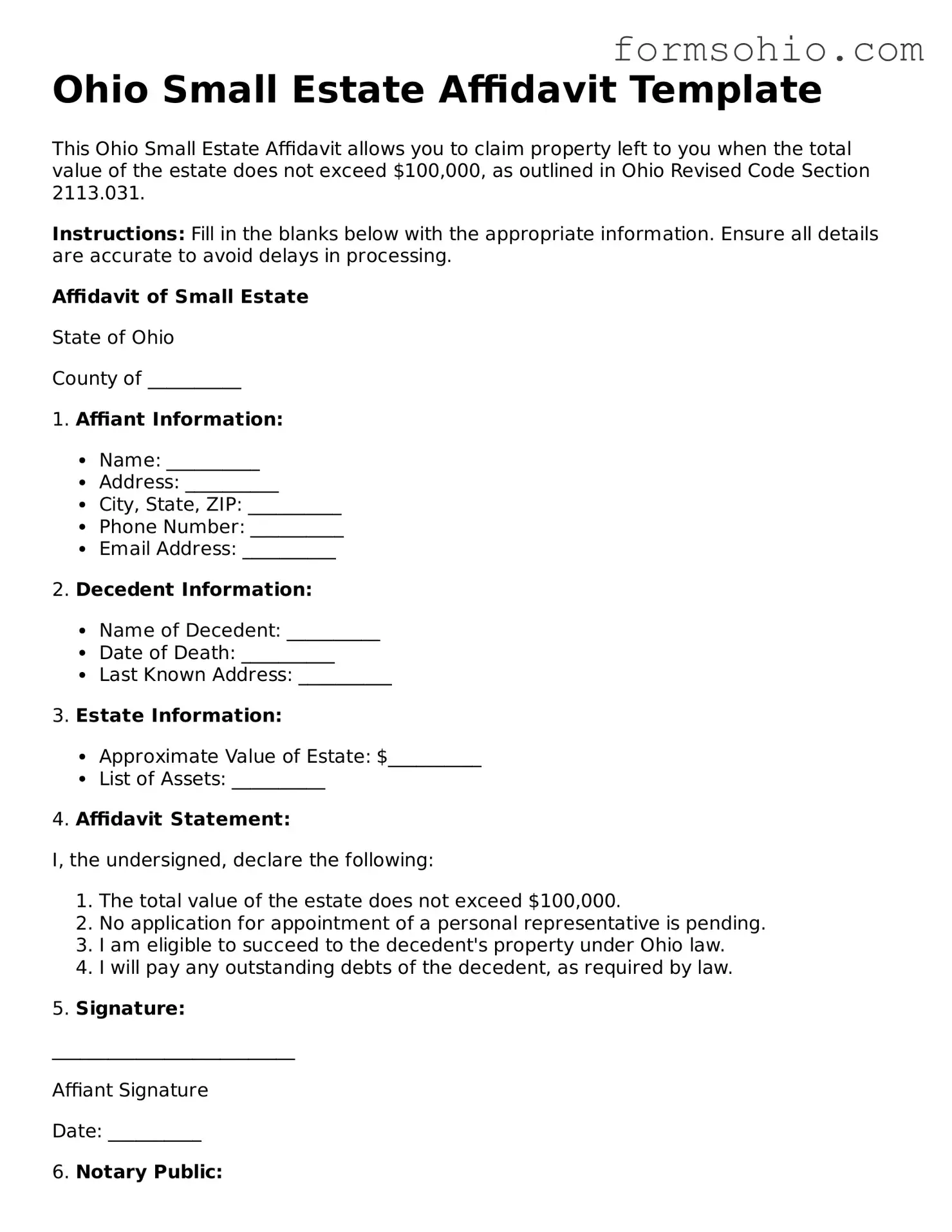Ohio Small Estate Affidavit Template
This Ohio Small Estate Affidavit allows you to claim property left to you when the total value of the estate does not exceed $100,000, as outlined in Ohio Revised Code Section 2113.031.
Instructions: Fill in the blanks below with the appropriate information. Ensure all details are accurate to avoid delays in processing.
Affidavit of Small Estate
State of Ohio
County of __________
1. Affiant Information:
- Name: __________
- Address: __________
- City, State, ZIP: __________
- Phone Number: __________
- Email Address: __________
2. Decedent Information:
- Name of Decedent: __________
- Date of Death: __________
- Last Known Address: __________
3. Estate Information:
- Approximate Value of Estate: $__________
- List of Assets: __________
4. Affidavit Statement:
I, the undersigned, declare the following:
- The total value of the estate does not exceed $100,000.
- No application for appointment of a personal representative is pending.
- I am eligible to succeed to the decedent's property under Ohio law.
- I will pay any outstanding debts of the decedent, as required by law.
5. Signature:
__________________________
Affiant Signature
Date: __________
6. Notary Public:
State of Ohio
County of __________
Subscribed and sworn before me this ____ day of __________, 20__.
__________________________
Notary Public Signature
My commission expires: __________
